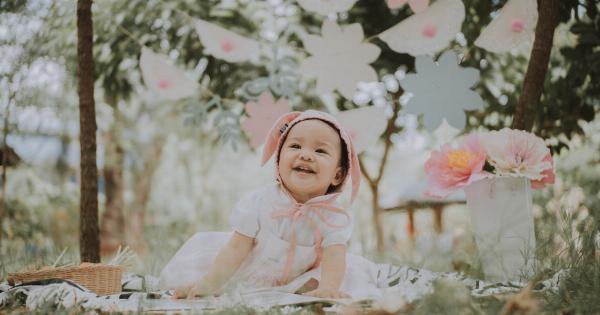When a baby is born, there is a lot of curiosity surrounding their features, including their eye color. The color of a baby’s eyes is often a topic of conversation among parents, family members, and friends.
People often wonder why some babies are born with blue eyes, while others have brown or green eyes. But did you know that a baby’s eye color can change as they grow older?.
In this article, we will explore the reasons behind a baby’s changing eye color and what factors can influence the color of their eyes as they grow older.
Factors That Determine Eye Color in Babies
The color of a baby’s eyes is determined by the amount and type of pigments present in the iris, which is the colored part of the eye. The iris contains two types of pigment: melanin and lipochrome.
Melanin is a dark brown pigment that gives color to the skin, hair, and eyes. The amount and type of melanin present in the iris determine the color of the eyes.
For example, people with a large amount of melanin tend to have dark-colored eyes like brown or black, while those with less melanin have lighter eyes like blue or green.
Lipochrome, on the other hand, is a yellow pigment that is concentrated around the edge of the iris. The amount of lipochrome present in the iris can also influence the color of a baby’s eyes.
Eye Color at Birth
When a baby is born, their eyes are usually blue or gray in color. This is because melanin production has not yet started, and the only pigment present in the iris is lipochrome.
As the baby grows older, the amount of melanin in their eyes increases, which can cause their eye color to change.
When Do Baby’s Eye Color Change?
The process of eye color change usually begins when a baby is around 6 months old. At this age, the amount of melanin in their eyes starts to increase, which can cause their eye color to change from blue or gray to green, hazel, or brown.
However, it’s important to note that not all babies’ eyes change color.
In some cases, a baby’s eye color may stay the same as they grow older, while in others, their eye color may change multiple times before settling on a final color.
Factors That Influence Eye Color Changes
Several factors can influence the color of a baby’s eyes as they grow older, including genetics and the environment. Here are some of the most common factors that can cause a baby’s eye color to change:.
1. Genetics
Genetics is the most significant factor that determines a baby’s eye color. The eye color of a child is usually determined by the color of their parents’ eyes.
However, it’s not always a straightforward process, as other factors can come into play.
For example, if both parents have blue eyes, there is a high chance that their child will also have blue eyes.
However, if one parent has blue eyes and the other has brown eyes, the child’s eye color could be blue, brown, or green, depending on the genes they inherit.
2. Ethnicity
Eye color is also influenced by ethnicity. For example, people of European descent tend to have lighter eye colors like blue or green, while those of African or Asian descent tend to have darker eye colors like brown or black.
3. Age
As mentioned earlier, the amount of melanin in a baby’s eyes can increase as they grow older. This can cause their eye color to change from blue or gray to green, hazel, or brown. Generally, a baby’s eye color will stabilize by the age of 3.
4. Health Conditions
Some health conditions can cause a baby’s eye color to change, particularly if they involve the production or distribution of melanin in the body.
For example, certain genetic disorders like Waardenburg syndrome can cause a person’s eye color to be odd or mismatched.
Another condition that can affect eye color is albinism, which is a genetic disorder that affects the production of melanin in the body. People with albinism typically have very light-colored eyes like blue or pink.
The Bottom Line
So, what causes a baby’s eyes to change color? The answer is genetics, ethnicity, age, and health conditions.
While most babies are born with blue or gray eyes, their eye color can change as they grow older due to the increased production of melanin in the iris. However, not all babies’ eyes change color, and some may retain their original eye color throughout their life.




























